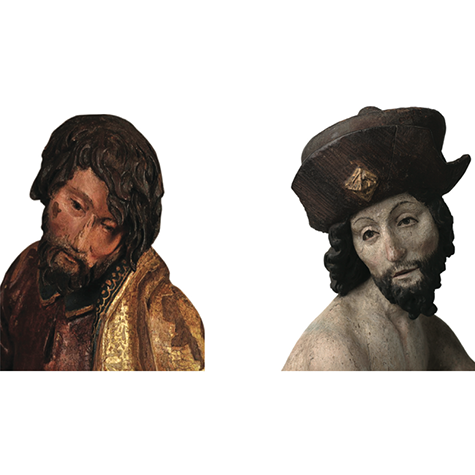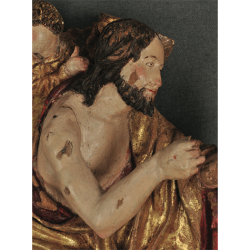Catalogue
THE CORONATION OF THE VIRGIN ALTARPIECE
STYLE
Despite its apparently homogenous appearance, the Rentería altarpiece conceals a variety of styles identified by Catheline Périer d’Ieteren. In her opinion, all the main scenes may be attributed to two of the most outstanding artists belonging to the plethora of highly-skilled sculptors who were active in Brussels towards the end of the XV and the beginning of the XVI centuries: the Bormans - a hypothesis that is confirmed by the analogies established between the architecture and polychrome decoration of other altarpieces they made.
However, notable differences have also been established between them: the reliefs of the Last Supper and Pentecost whose style is more archaic and whose slimmer figures in refined postures would be the work of Jan Borman III, while the Assumption-Coronation relief with its freer, more-evolved figures, correspond to the way in which Passier Borman normally worked.
Périer d’Ieteren also acknowledges the appearance of new characteristics in the few reliefs conserved from the vertical sections which, in the scene of the Holy Bishop, she attributes to workshops in Antwerp.




